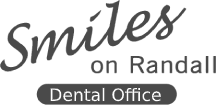 HOW MUCH DO you know about what’s on the inside of your teeth? Let’s take a quick look! We feel that the more our patients know about the structure and anatomy of teeth, the better they will understand how to take good care of them and how important that is. Let’s start at the roots and then move up to the crown.
HOW MUCH DO you know about what’s on the inside of your teeth? Let’s take a quick look! We feel that the more our patients know about the structure and anatomy of teeth, the better they will understand how to take good care of them and how important that is. Let’s start at the roots and then move up to the crown.
The Roots of Our Teeth
Our teeth are connected to our jaws by the long roots beneath the gums. The roots are held in place and cushioned by the periodontal membrane between them and the surrounding bone. In addition to being shielded from harmful bacteria by the gum tissue, roots have built-in armor called cementum, a hard, calcified substance that coats their surfaces. The tip of each root ends in a tiny hole through which blood vessels and nerves can access the inside of the tooth.
The Layers of a Tooth’s Crown
The crown is the portion of the tooth that we can see above the gums, and it is made of three layers. At the core is the pulp chamber, which is where the blood vessels and nerves from the roots go. This is what makes a tooth alive and why we can feel the temperature of our food and drinks in our teeth, or pain when something is wrong. Keep in mind that tooth pain is a warning sign and a good cue to see the dentist! Surrounding the pulp is the dentin, which is essentially bone. This layer is naturally somewhat yellowish in color and thicker in adult teeth than baby teeth, which is why there is often a contrast in color between a child’s new adult teeth and the surrounding baby teeth! Microscopic tubules run all throughout the dentin, which is how the nerves in the dental pulp can feel temperature changes. The outermost layer of our teeth is the protective enamel layer. Enamel is mostly made of inorganic hydroxyapatite crystals, and it is the strongest substance in the body. We’d have a hard time using it to chew our food if it wasn’t! Because it is inorganic, though, enamel can’t repair or replace itself when it is eroded or damaged. That’s where good daily brushing and flossing habits, cutting down on acidic foods and drinks, and regular dental visits come in!
Let’s Keep Teeth Healthy from Crown to Root!
From enamel to pulp, roots to supportive periodontal structures, every part of the tooth and surrounding tissue is important to good dental health. Keep up the good brushing and flossing, and make sure to keep scheduling regular appointments with the dentist!
